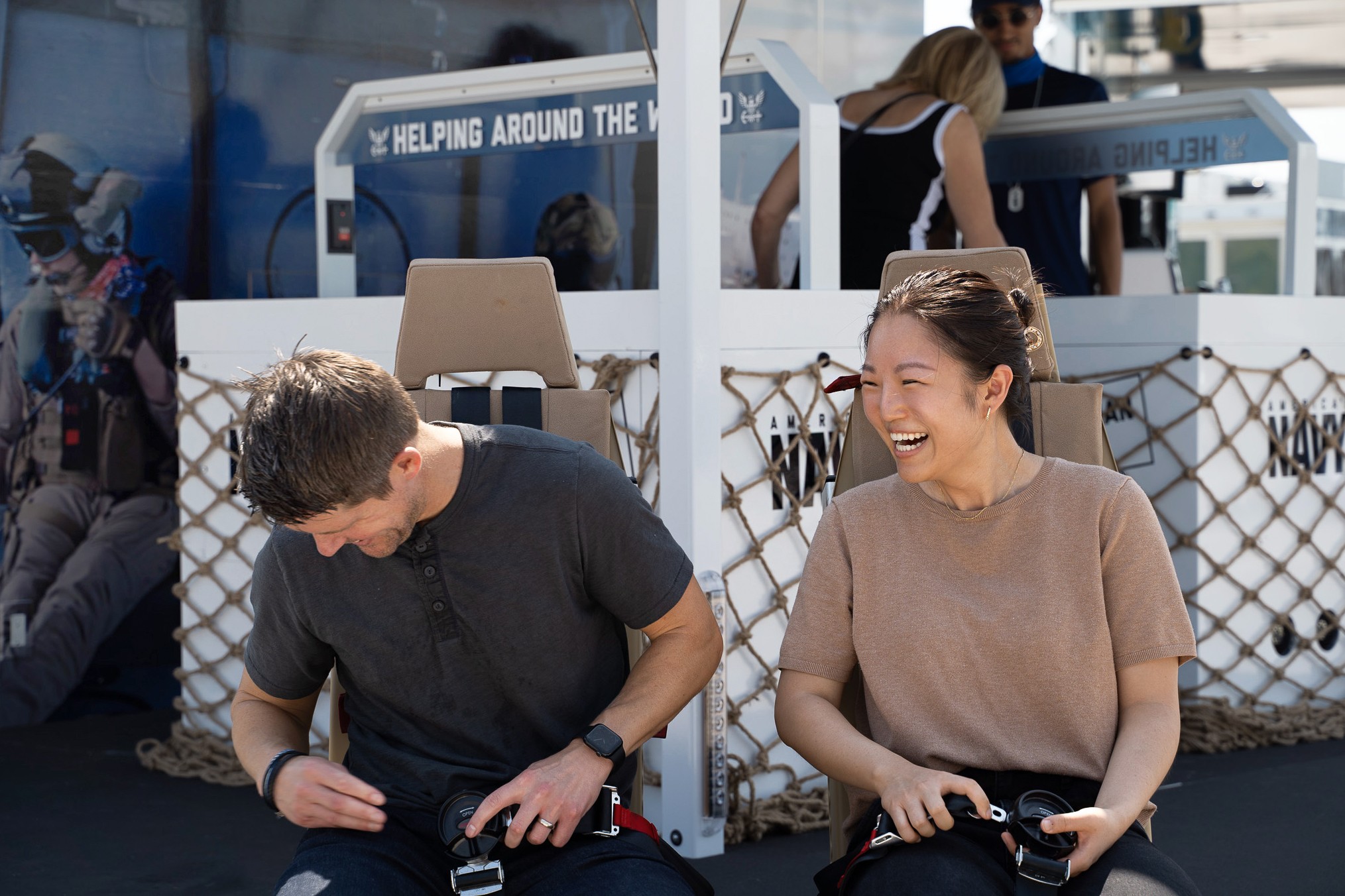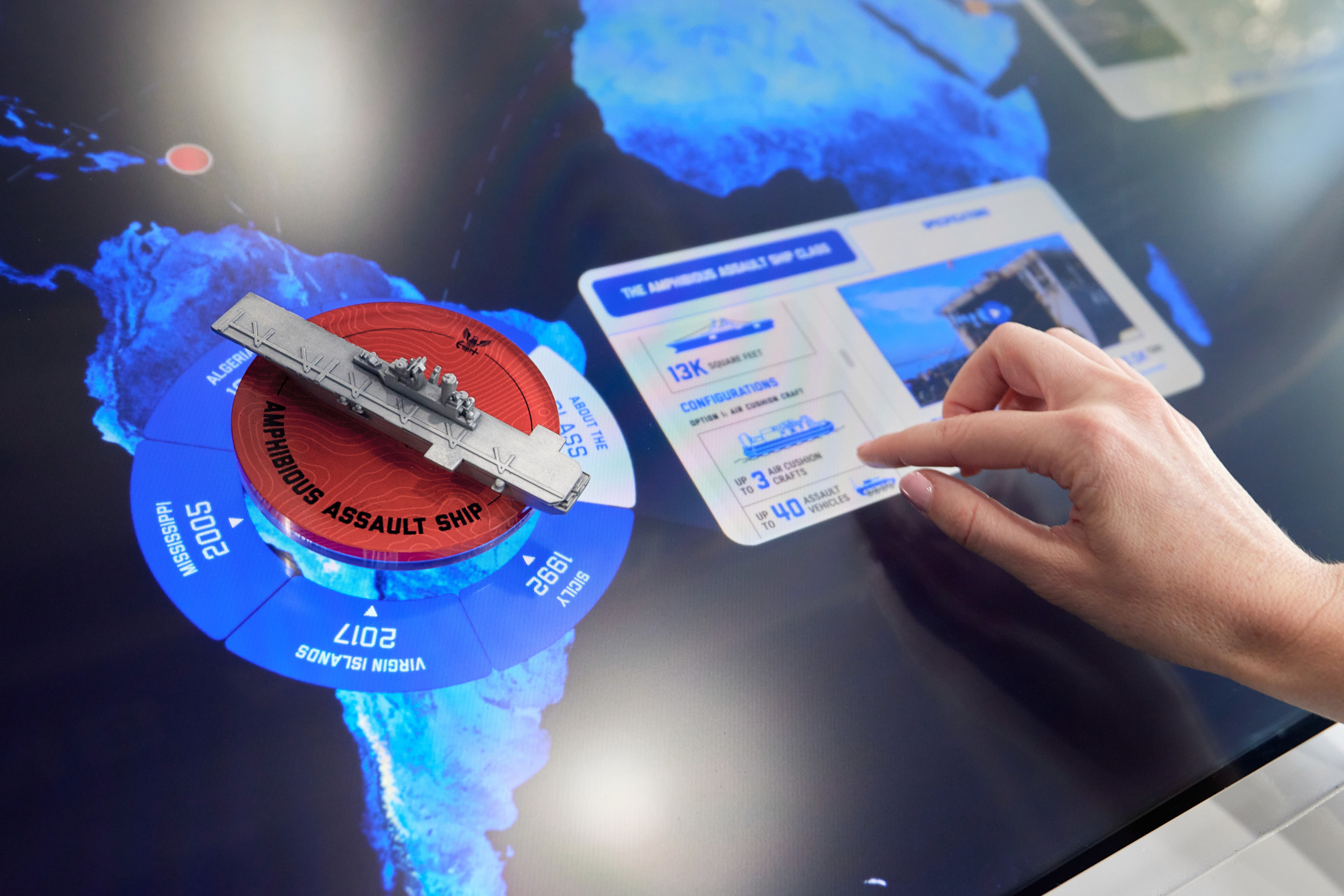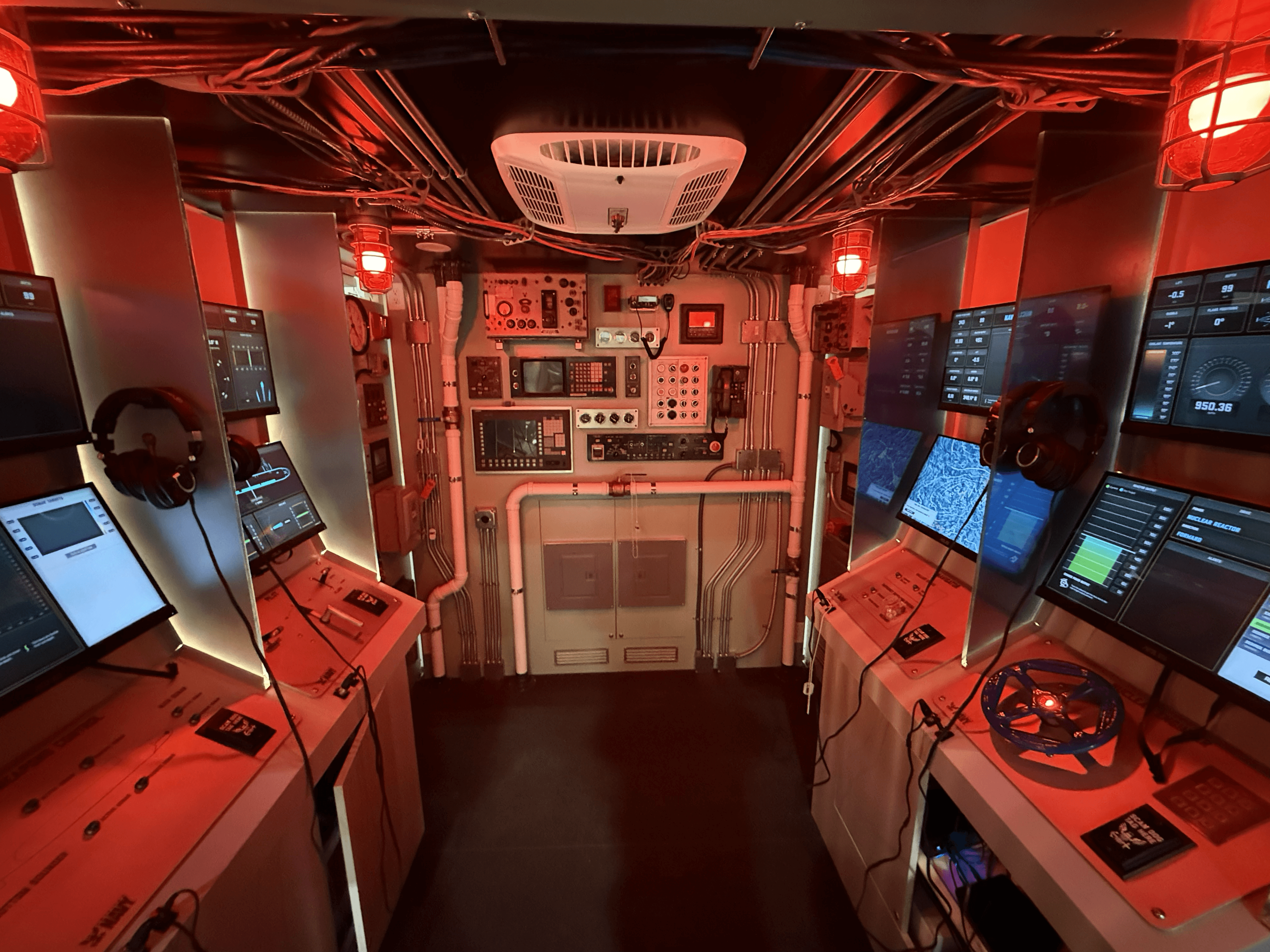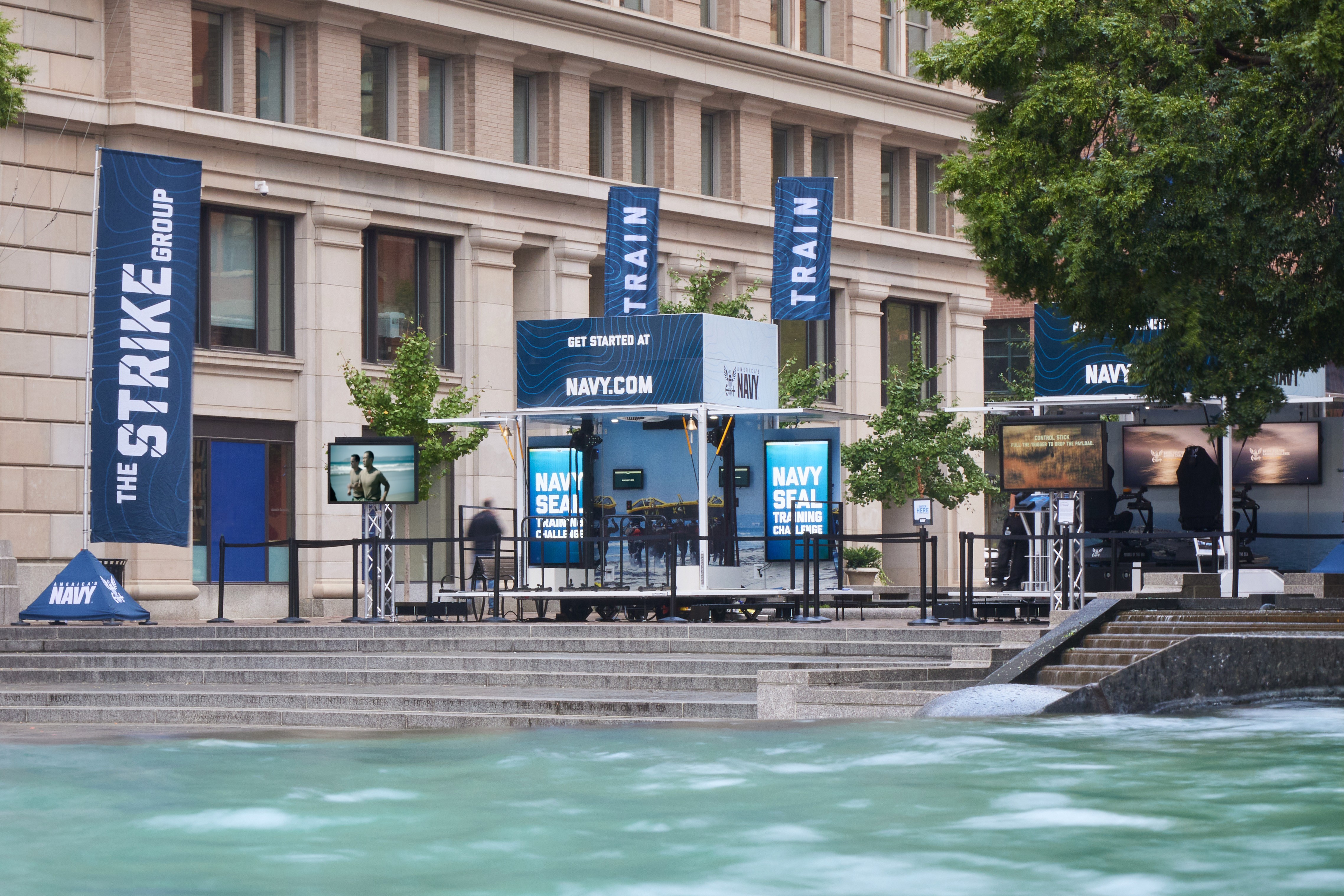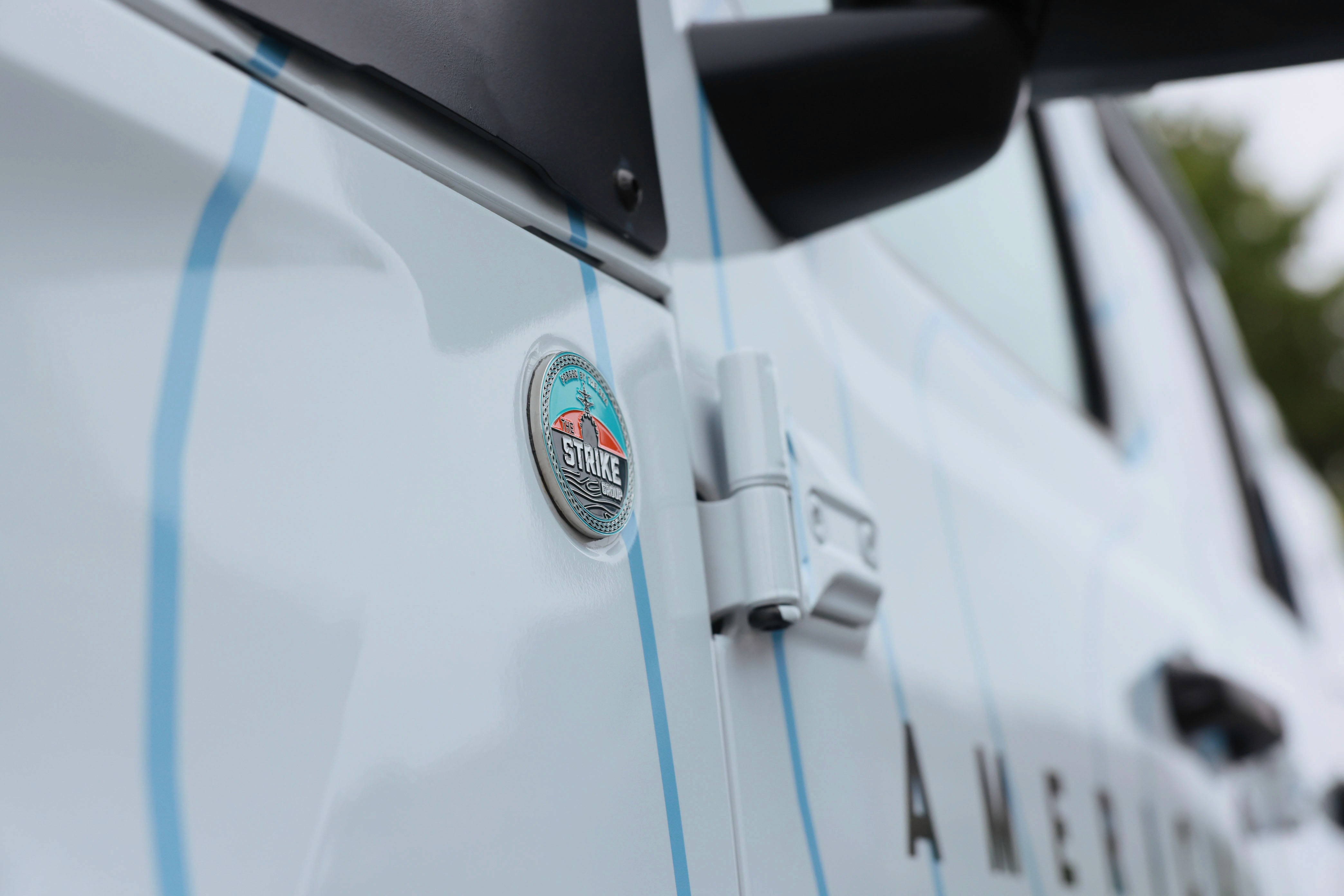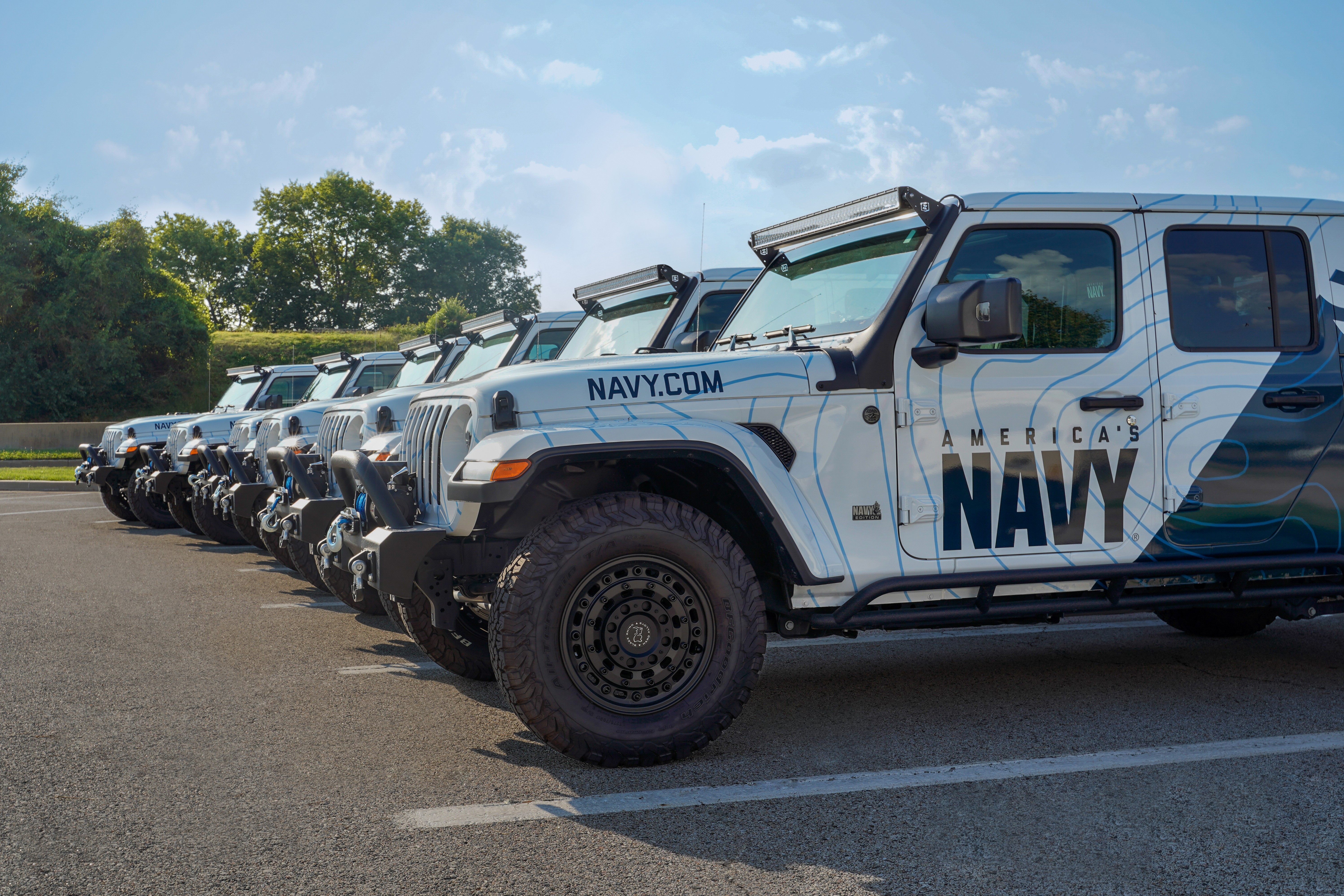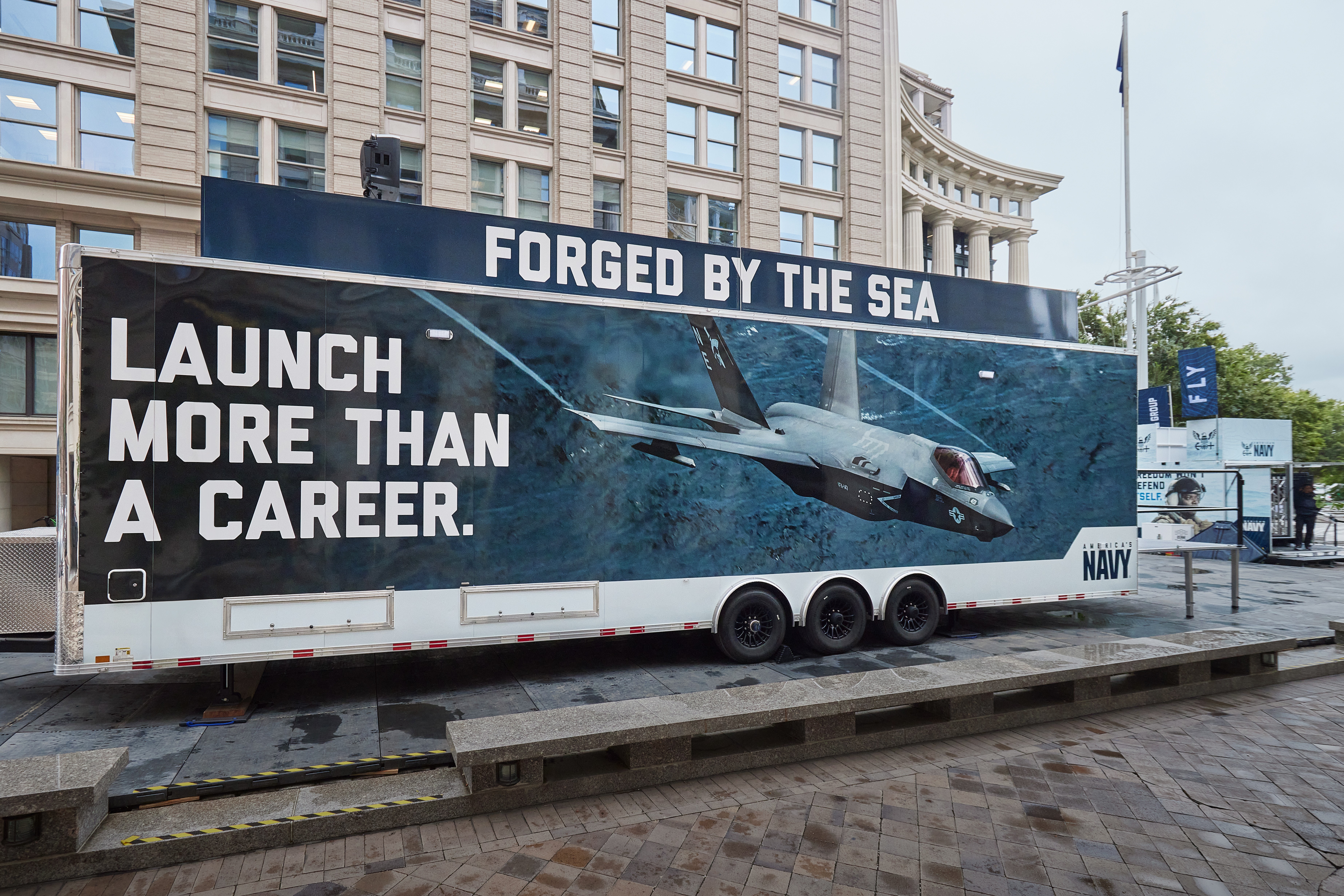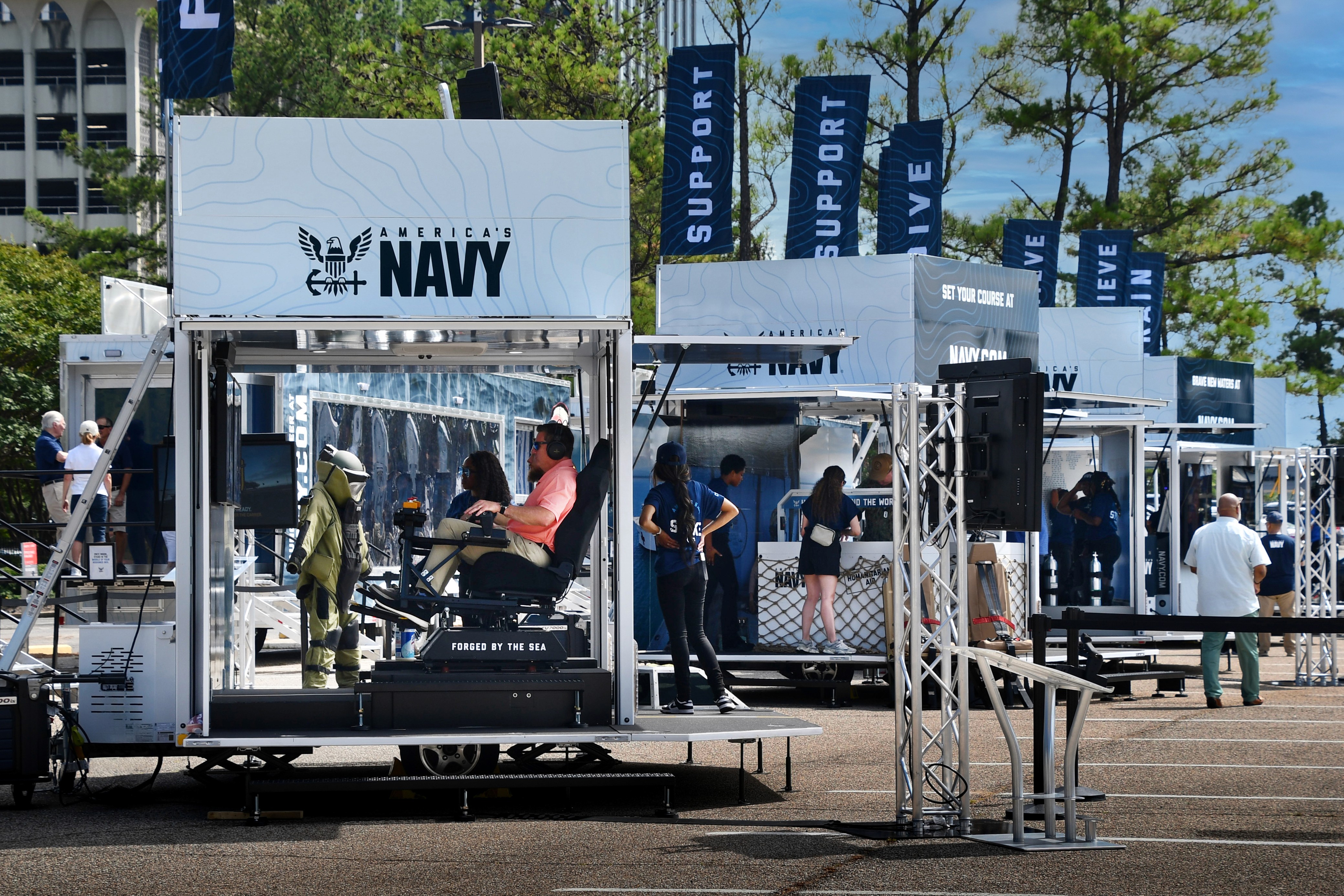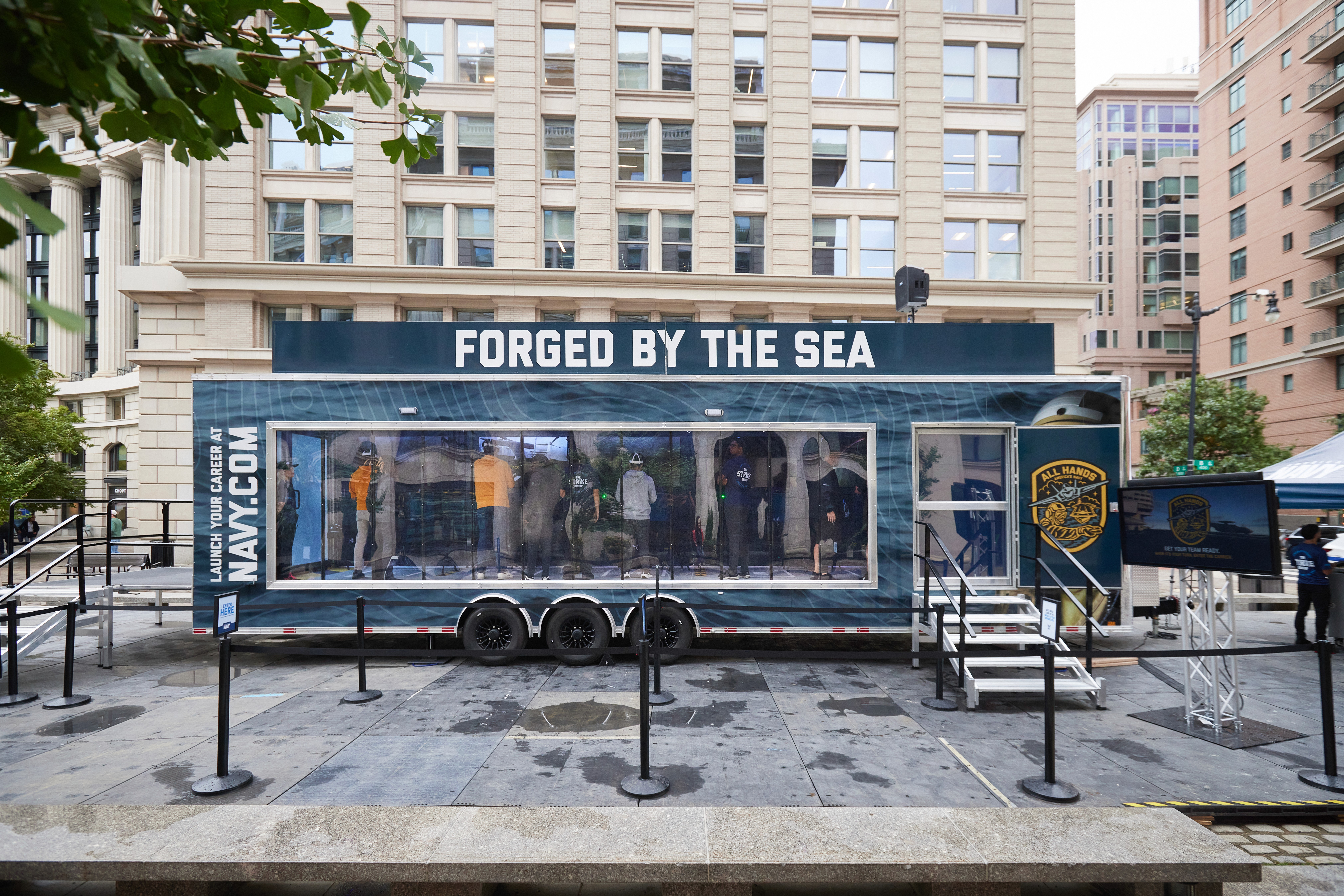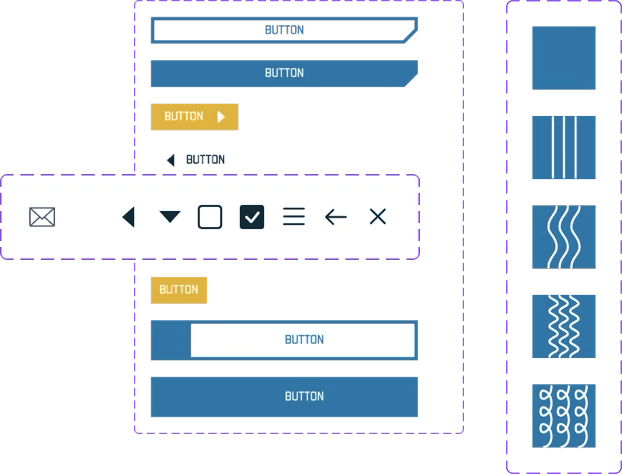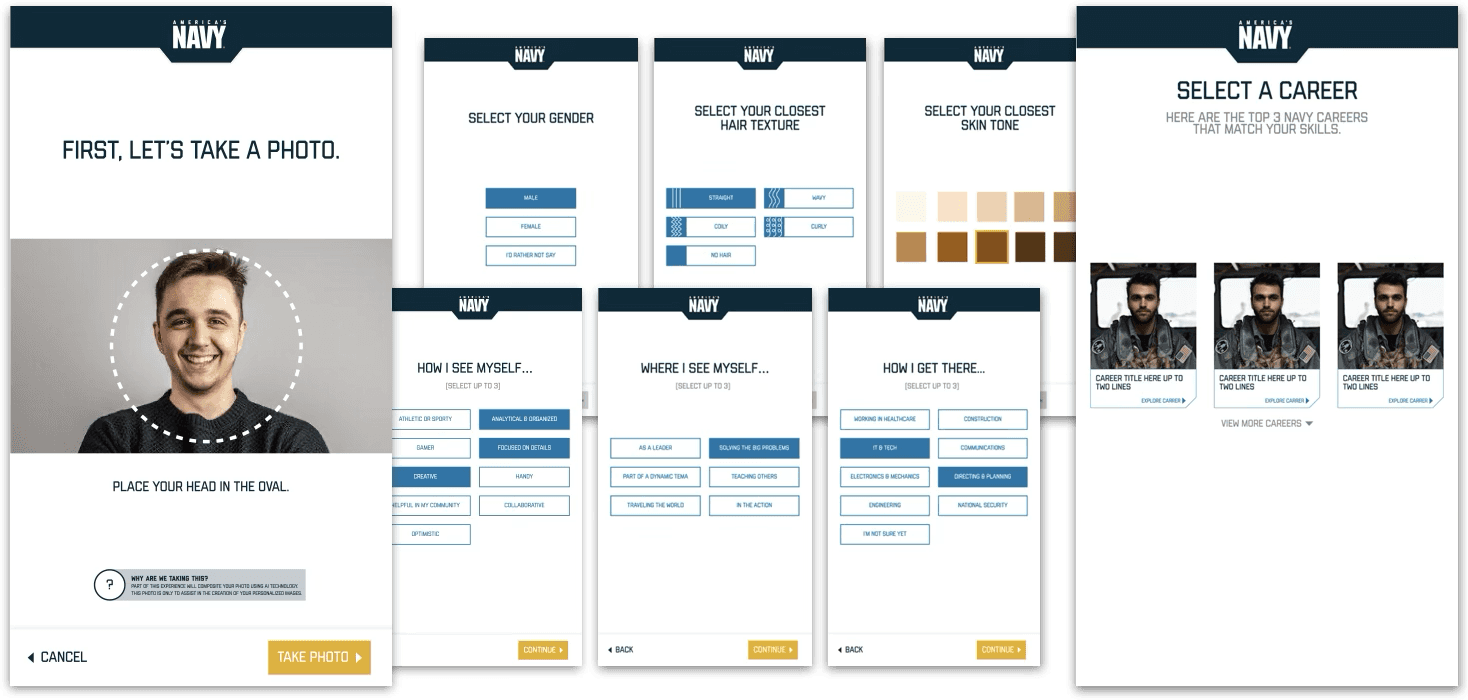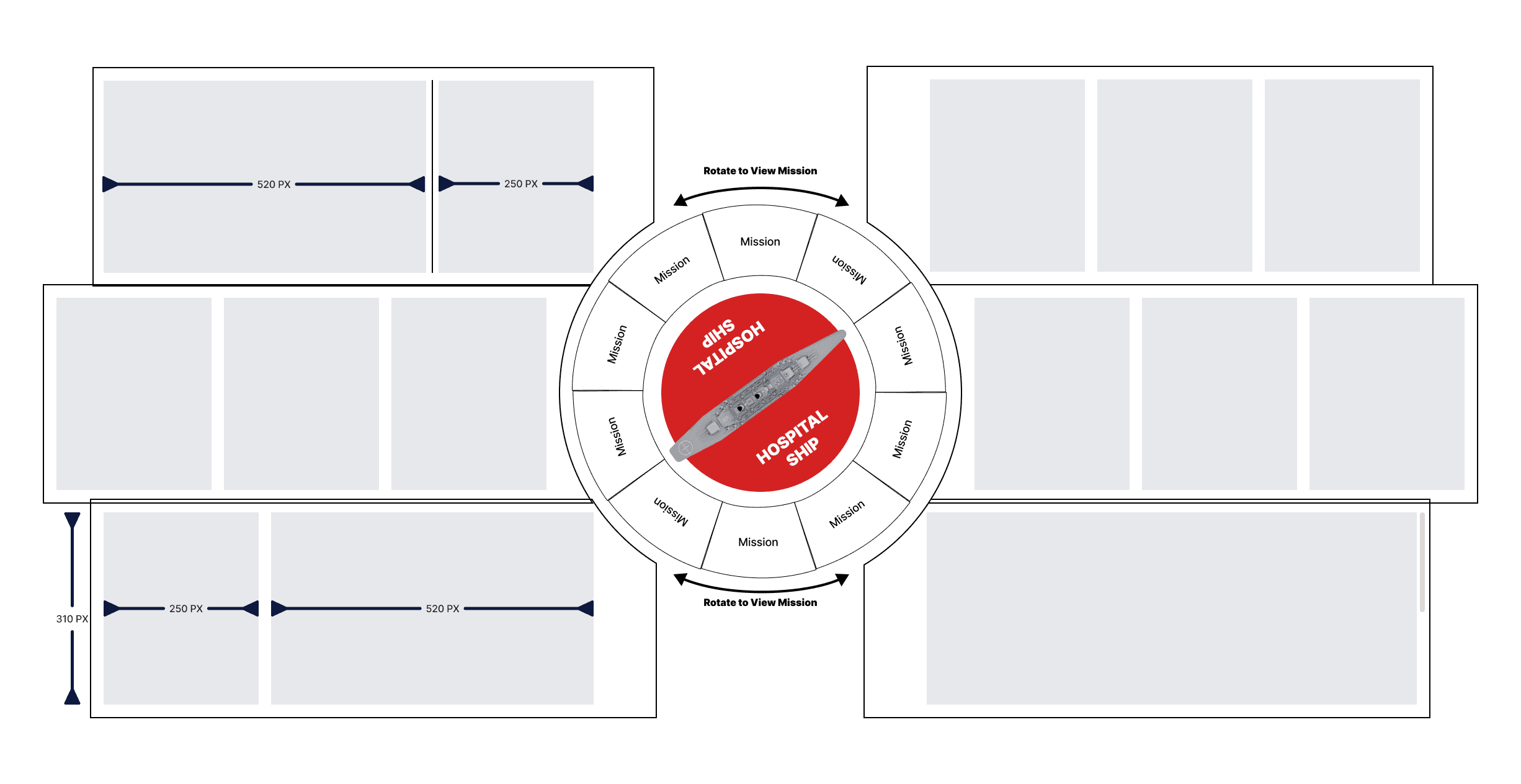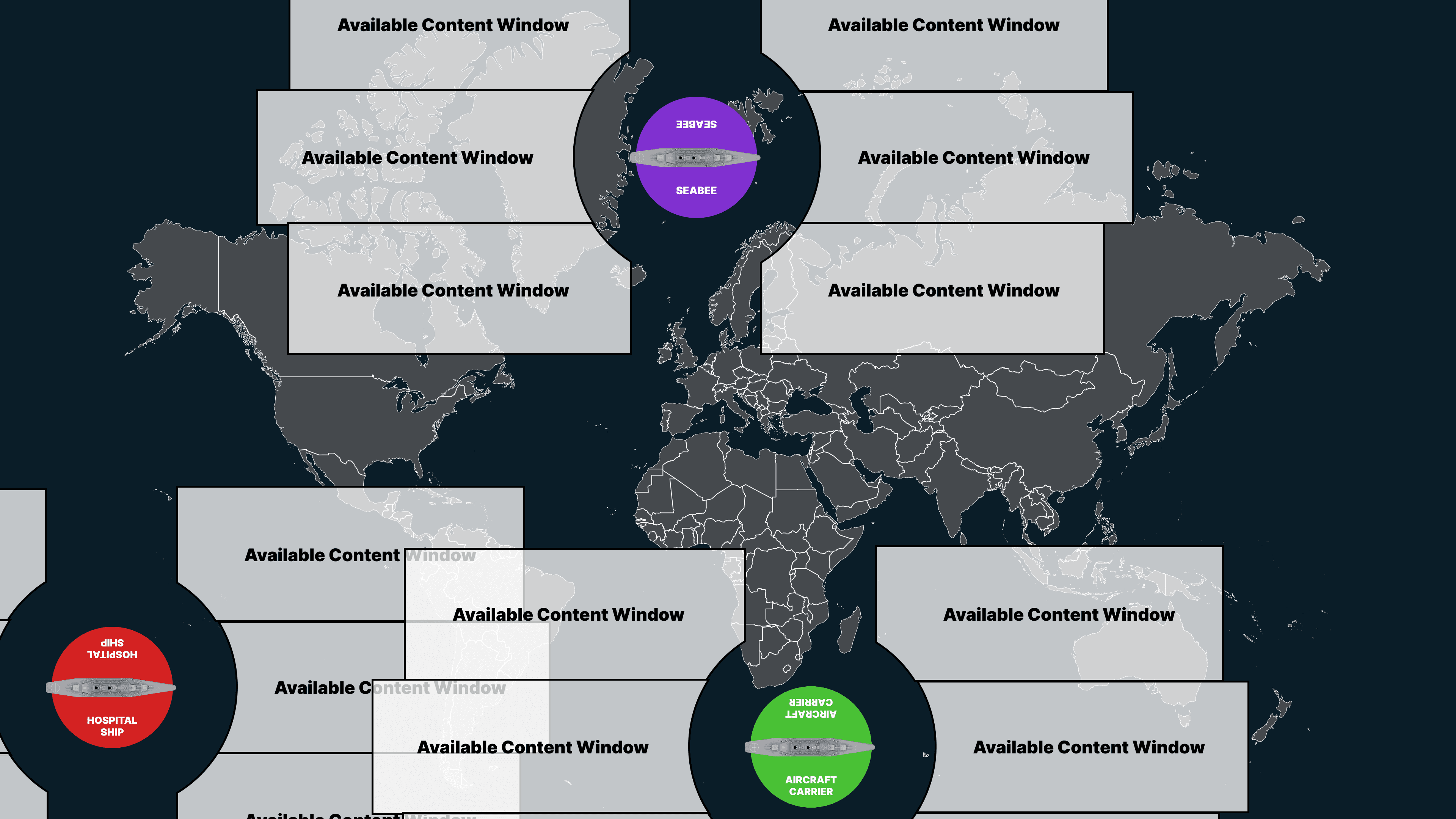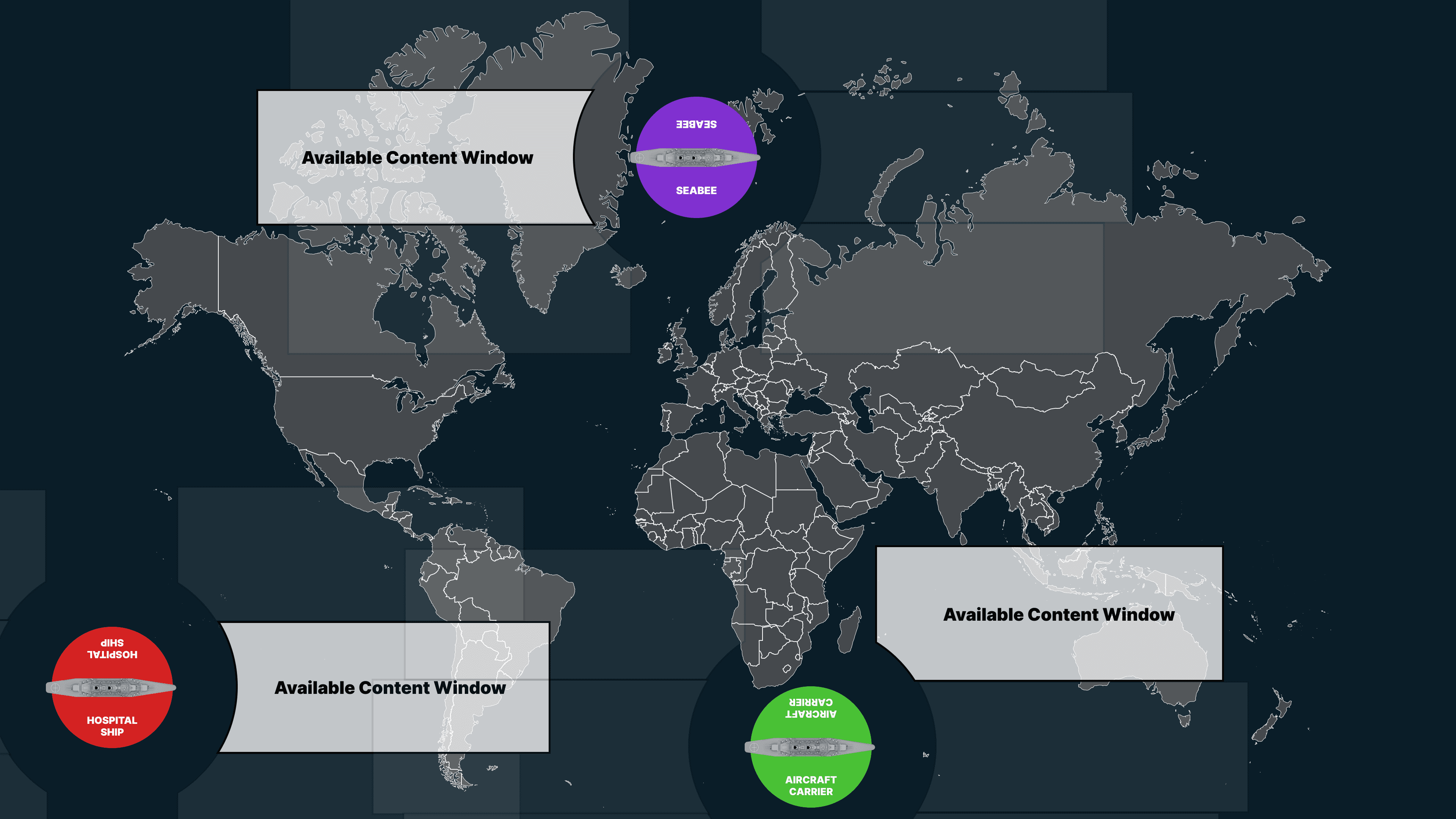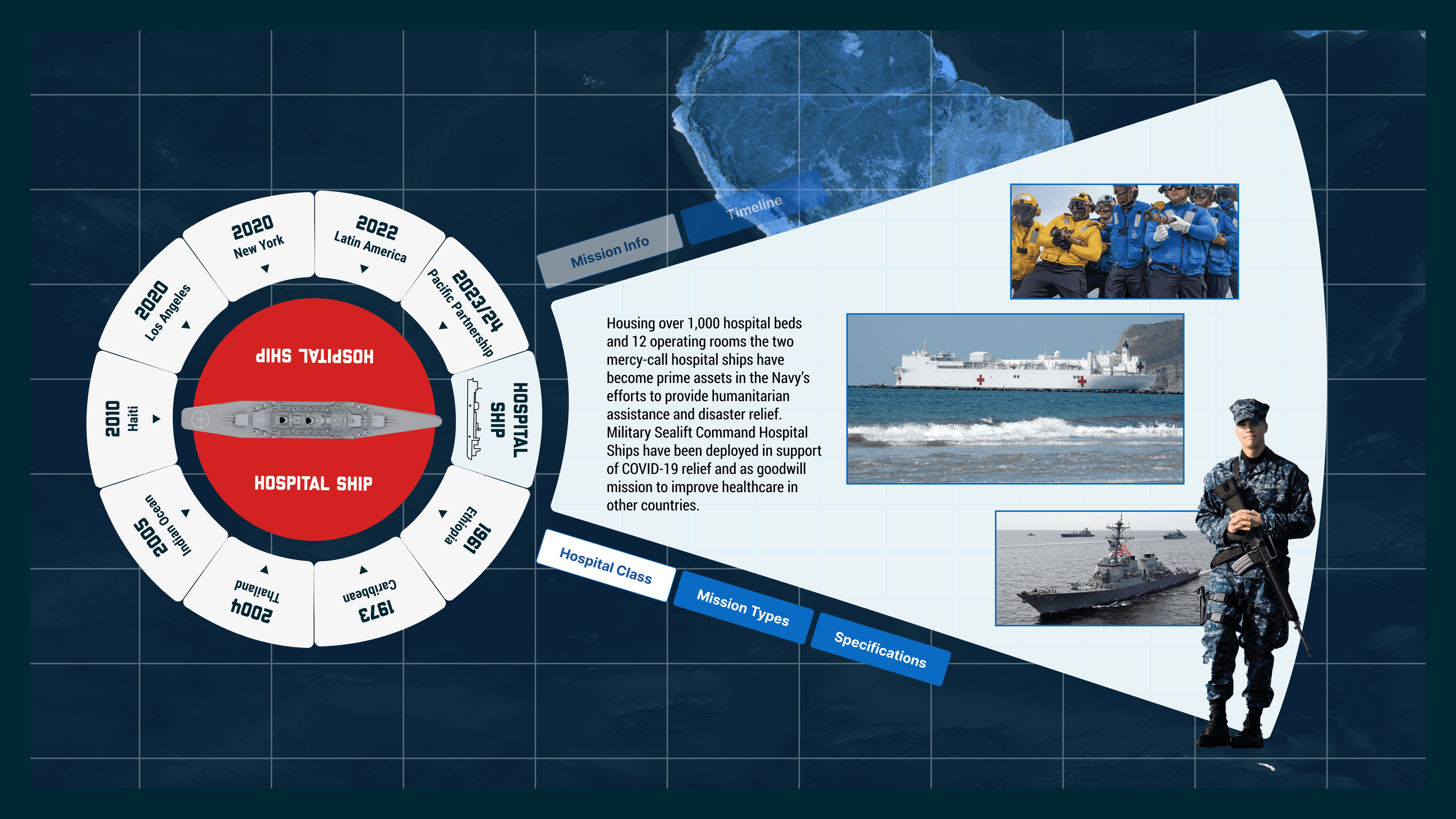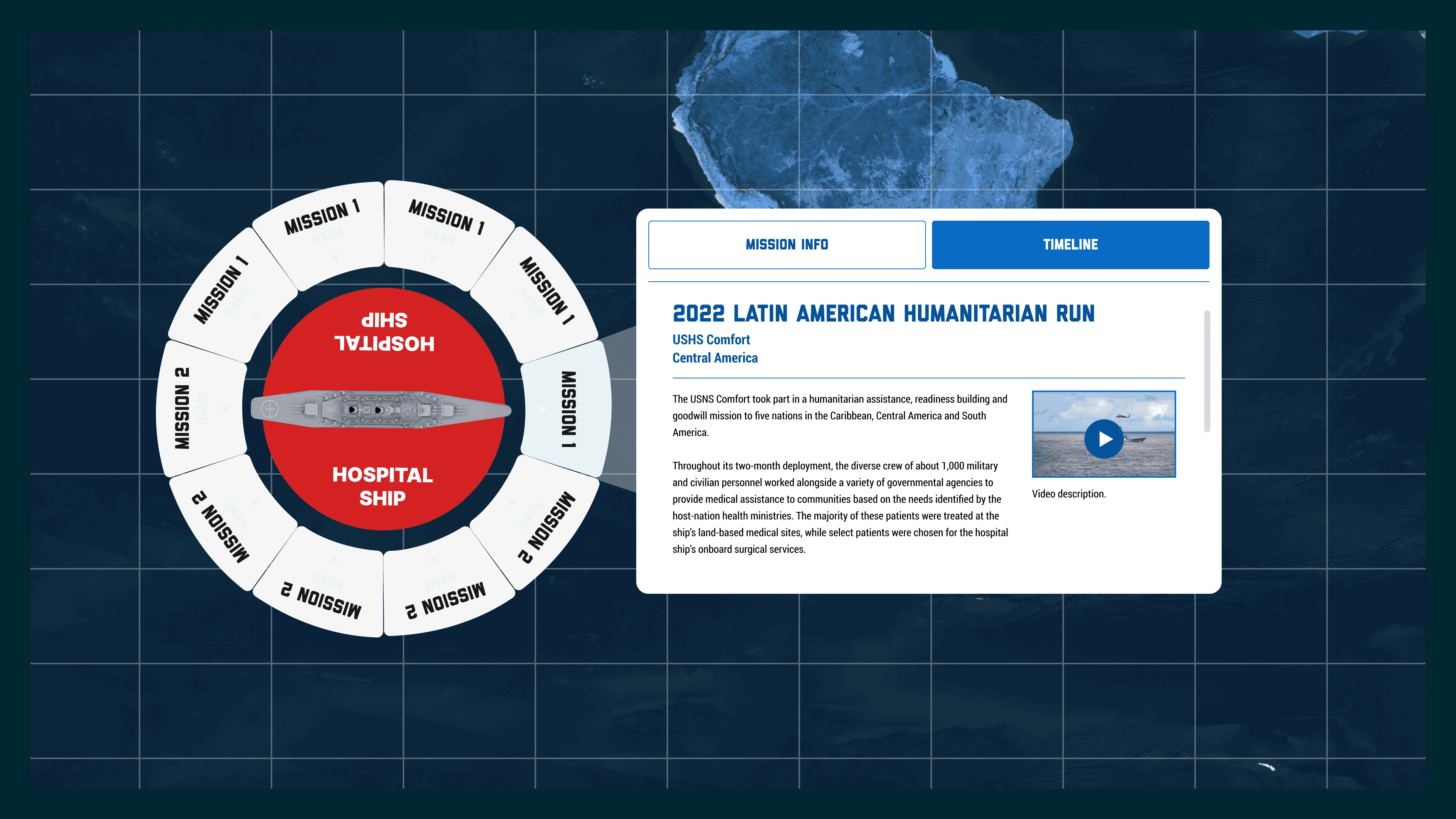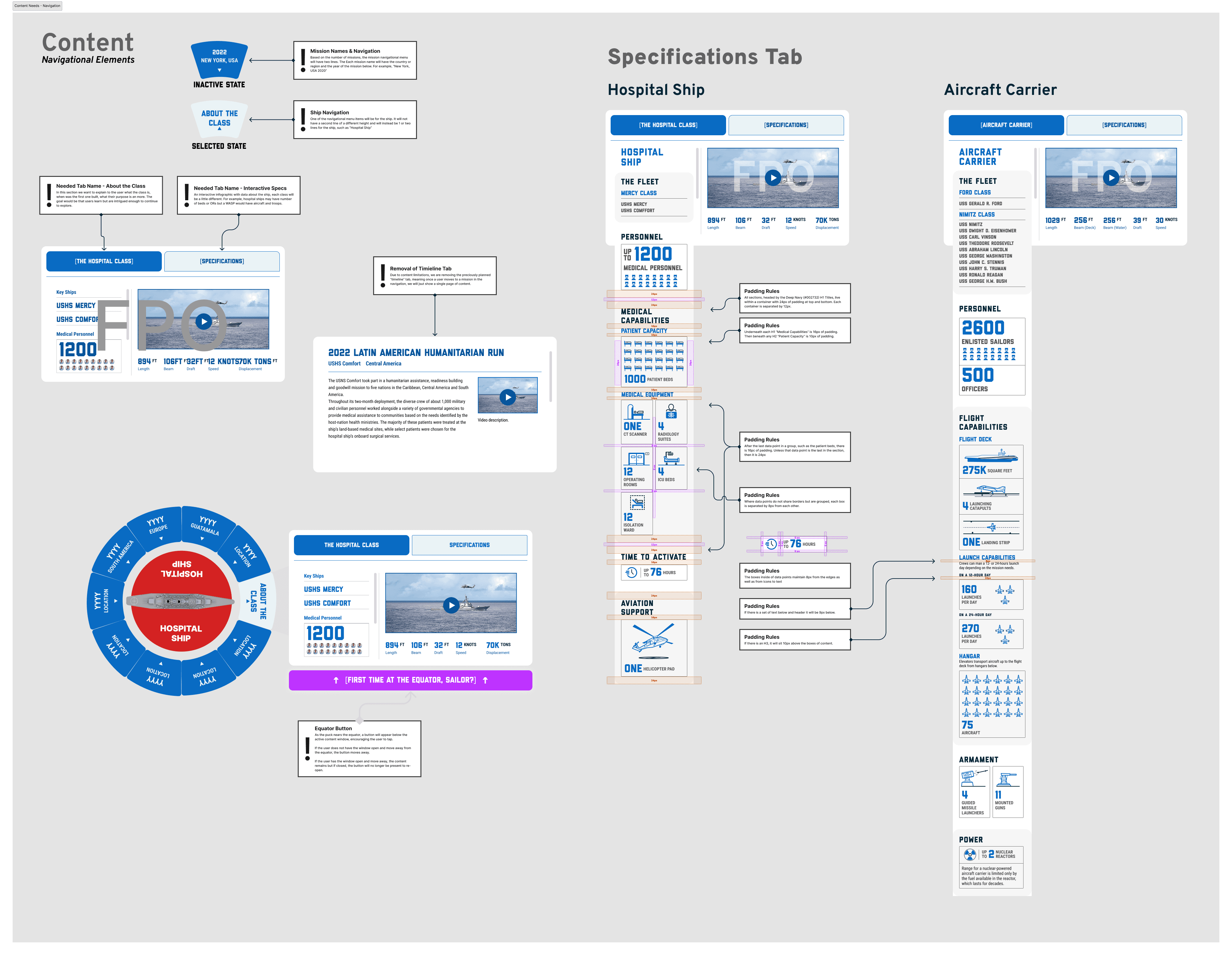
What if recruitment could feel like deployment?
Completed in 2024 & 2025 while Director, Experience Design at VML.
All content is owned by VML and the U.S. Navy.

What if recruitment could feel like deployment?
The U.S. Navy wanted to modernize its touring experience and show young people that service is more than ships and uniforms — it’s technology, collaboration, and purpose. As the lead designer, I helped create The Strike Group: a fleet of interactive trailers that let visitors pilot subs, respond to disasters, and explore the Navy’s world firsthand.
annual capacity
Increase in annual capacity
Days Active
Events
Recruits Registering for Follow Up
Overview
The U.S. Navy is one of VML’s longest-standing brand partners, known for powerful campaigns that communicate purpose, service, and pride. In 2023, the Navy set out to modernize its traveling recruitment experience — a touring set of trailers that visit schools, fairs, and major events across the country.
The goal was ambitious: expand reach, represent more diverse career paths, and reframe the Navy as a place for everyone— especially women and minorities. The Admiral overseeing recruitment challenged the team to create something more dynamic, tech-forward, and interactive than anything the Navy had done before.

The Design Problem
The VML brand team has been working with the U.S. Navy for years making amazing ads and activations. Over 10 years ago, VML created a traveling experience based off of life on an aircraft carrier. In 2023, the Navy and VML partnered to upgrade this experience. First with three aircraft experiences with updated VR technology and supporting with nine different experiences. This allowed the U.S. Navy to be in three places at once, carrying more experiences or bring them all together to show their might, so The Strike Group was born.
The Strike Group is a massive partnership between vast disciplines within VML, the game execution expertise of FastEffects, and the build, maintenance, and logistics capabilities of Event Link. Together the team built and launched amazing experiences. Starting with a new check-in system, potential recruits get a dogleg, fitted with an RFID. The tag is color coated based on initial interest in the navy to give recruiters insight to prioritize their time. This tag then is scanned at each of the seven experiences, tracking their data, scores, and interests. At the end of their day exploring the Navy, they will receive an email with a summary of their scores and career interests.
The ten experiences are broken up into three groups, or Squads, Alpha Squad, Beta Squad, and Charlie Squad. These separate groups allow the Navy to travel throughout the country in three regions, the often switch to bring new experiences to that region.
Experience Foundation
The VML Navy team worked with FastEffects and Event Link to identify the main experiences that make up The Strike Group and explored some initial feasibility. Each was anchored by a large trailer with supporting cubes with unique experiences.
All Hands
Built in a large pull-behind trailer, All Hands is a VR based collaborative game about life aboard an aircraft carrier. Users stand in a netted area with a VR set that has them launching jets, piloting helicopters, loading weapons, and driving carts. Each team is squad by this experience.
Achieve
Behind a large screen showcasing AI-generated images of actual recruits in Navy roles that suit their skills, recruits, take a photo and a short quiz to identify what Navy career is right for them, ending with the ability to literally see themselves in the role.
Train
Unfolding from a trailer is a small gym, recruits complete pull-ups, pushups, and a rope pull to train like a Navy Seal and even compete head to head against the Seal’s recruitment team. When you are finished record your scores and see how you stack up against other recruits.
Support
Step aboard a trailer built to look like the cargo bay of a Navy Sea Hawk, users explore the various humanitarian missions throughout the Navy’s history, seeing how unique ships and ships suited for battle respond around the globe in times of criss.
Dive
Launch from a dock and drive a boat to a damaged pier, avoiding rocks and other ships. Upon arrival, recruits can put on a diver’s helmet, grab a torch and weld a damaged pier on the touch screen in front of them, the better the weld, the higher the score.
FLY
Build to resemble the deck of an aircraft carrier, recruits step aboard and get into the cockpit of a jet. A flight simulator takes users on a training mission, launching from the carrier, following their lead through the air and a valley, before dropping a training missile on a target.
SEEK
Recruits take a look in a periscope before entering a closed off trailer. Red lights and alarms blare as four recruits take on different roles of a submarine mission, collaborating to get through the arctic and break through the ice’s surface, just beware of creature and ships nearby.
Recruitment
Speaking to a recruiter during any event can also get you the recruiter badge.

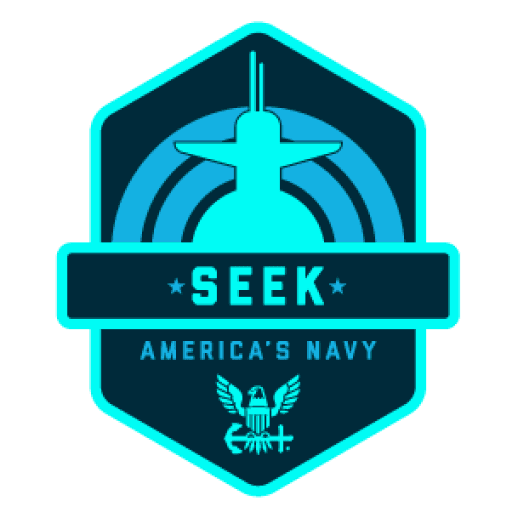

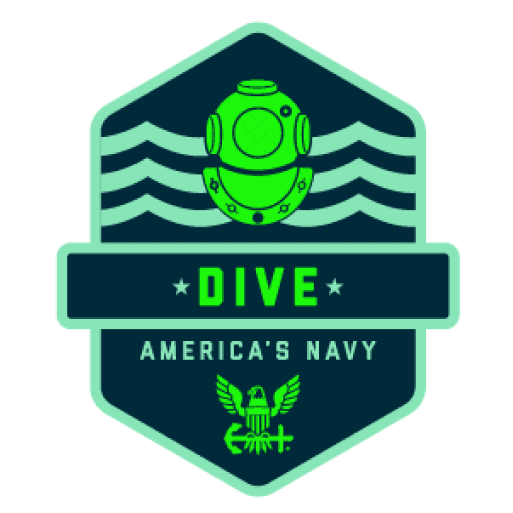


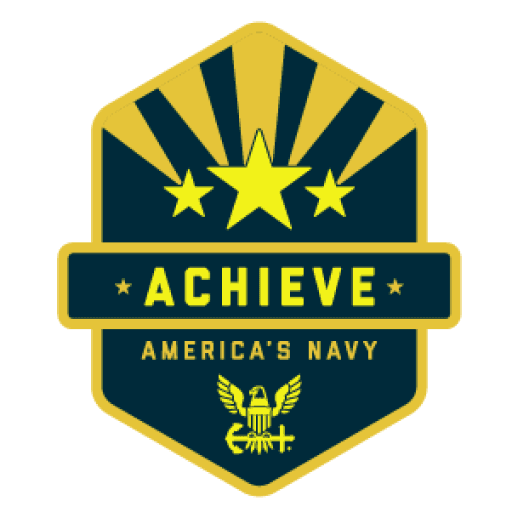
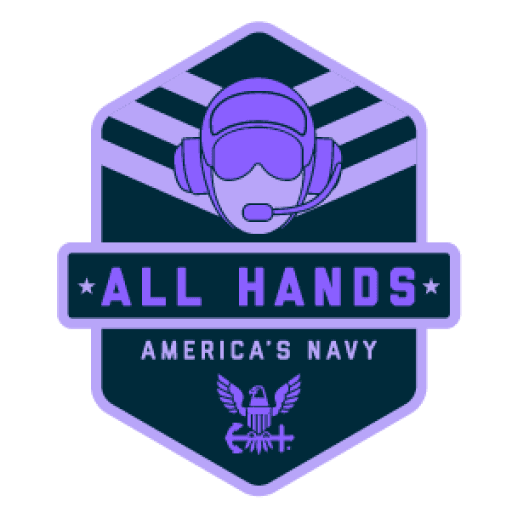
A Digital Identity
By the time I was asked to join the project, VML’s brand identity team had created a solid visual identity. Bringing new life to the Navy brand, renders had each of the cubes wrapped in a topographic style pattern and new Navy slogan tied to each experience. The tents and dog tags, even the pick-up trucks and jeeps were wrapped with Navy branding, creating a spectacle as it drives across the country.
However, the digital experiences tied to the work did not share the same cohesive vision. The first task was to help shape the various digital touchpoint to align them within a single lightweight design system that matched to the overall brand, this could then be applied to the sign-in form, touch screens where users interact within the experiences, and an app to bring the Achieve career quiz and generative-AI photos to life no matter where The Strike Group is sailing.
Train
At the train cube, recruits complete various physical challenges, since the main goal was to collect data for the recruit and for the navy, the exact scores of each person needed to be recorded. A large touch screen was located at each of the two stations just for the staff to use, they were however facing right toward the crowds and in clear sight of the recruits.
While the initial intent was a simple input system for the staff to update, it’s visual priority within the cube meant we needed to adapt a design language from the Navy’s updated brand that fit within new systems of inputs and calculations.
Achieve
At the achieve cube, recruits step up to one of four consoles and walk through a multistep process of taking their photo, giving information about their physical appearance, then taking a career quiz. With the implementation of generative AI technology, I was tasked with creating transparent user flows that clearly communicated data usage and image manipulation processes, building trust through ethical design practices.
The success of the Achieve career matching experience prompted Navy leadership to request an additional iPad application for recruiters to use independently from the main installation. This expansion required developing a streamlined authentication system for Navy personnel that balanced security with ease of use, plus implementing a compliant data collection mechanism for gathering prospect contact information to deliver personalized results. Throughout the project, I needed to maintain design consistency while adapting to these evolving requirements and technical constraints of mobile deployment.









Exploring Purpose
In addition to high-adrenaline simulations and test-your-mettle training, The Strike Group includes a deeper kind of mission—one rooted in global impact and service. The humanitarian experience transforms the idea of naval power into a story of rescue, relief, and rebuilding. As Digital Director, I helped build a tabletop interface where visitors could place ship pucks into a physical map and instantly explore the Navy’s humanitarian missions across the globe. From hospital-ship deployments to disaster-relief operations and infrastructure rebuilding by the Seabees, the experience makes visible the often unseen humanitarian reach of the fleet.
The cube were a tough translation of the digital experience into an interactive table top where multiple users would be at one table. Here’s how that concept took shape.
Content Anchoring
Once we introduced physical pucks into a shared digital surface, the design challenge became far more intricate. Visitors could drop a ship anywhere—tight to the edge, overlapping another vessel, or clustered with multiple pucks. That meant the content had to behave like a living system, constantly adapting where information appeared. We tested a wide range of anchoring patterns and container shapes, from multi-directional snap zones to radiating triangles and simple rectangles, to find the model that felt both effortless and informative no matter where the user placed a ship.
Our first approach was to design a six-zone anchoring system—three potential content positions on each side of the puck—to maximize flexibility and keep information clear no matter where a ship was placed. In theory, this created the most adaptive layout. In practice, our early prototype showed the opposite: the interface became overly reactive, constantly shifting and re-anchoring as users moved pucks even slightly. The result was visual noise and a frustrating experience. We pivoted to a simpler, more predictable left-right anchoring model and focused on minimizing the content footprint. To maintain clarity, we added gentle “nudge” behaviors that guide users when they place ships too close to other pucks or near the table’s edges—reducing chaos while preserving a sense of physical freedom.
Visual Language
Developing the visual language required us to balance clarity, contrast, and the overall mood of the experience. We explored both light and dark map treatments, evaluating how each affected legibility in a busy physical environment and how well they complemented the Navy’s branding. A darker map provided stronger contrast for interactive elements and helped mission markers stand out without overwhelming the table. Each mission needed a clear geographic anchor, so we designed an animated pinpoint system that highlighted the exact location of the operation as users explored its story. These markers subtly pulsed and connected back to the content window, creating a seamless relationship between narrative and geography while helping visitors understand where each humanitarian mission took place in the world.
Color selection became especially important for the physical pucks themselves—the objects visitors grabbed, carried, and placed on the table. We explored everything from traditional Navy palettes to highly fluorescent options, looking for a balance between authenticity and visibility. Each puck needed to feel distinctly “Navy,” but also stand out clearly against the dark map surface to help users track their chosen vessel. The final palette grounded the pucks in familiar naval tones while adding brighter, saturated accents that gave each ship class its own identity. This ensured that even in a crowded, fast-moving environment, visitors could quickly spot their puck and understand which vessel they were bringing to life on the table.
Final Content
To make each ship and its missions immediately understandable, we designed a suite of infographics that paired directly with the digital content triggered by the pucks. These visualizations distilled key information—vessel capabilities, mission type, and humanitarian impact—into clear, digestible graphics that complemented the interactive storytelling. By combining concise data, intuitive icons, and subtle motion, users could quickly grasp what each ship does and where it operates, reinforcing both the educational and recruitment goals of the experience.
The result was a cohesive system that seamlessly blended physical and digital interaction: tactile pucks, adaptive content windows, a thoughtful visual language, and clear infographics all worked together to immerse visitors in the Navy’s humanitarian missions. Visitors could explore, experiment, and discover at their own pace, while the interface maintained clarity and storytelling integrity. The experience launched to strong engagement and positive feedback, earning Navy approval for expansion and demonstrating how thoughtful UX design can make complex systems both approachable and compelling.
Photos and videos below show the final installation in action, highlighting the table, pucks, and interactive infographics in use.
